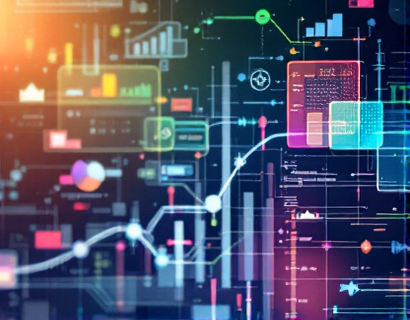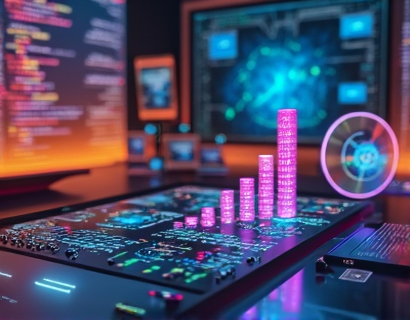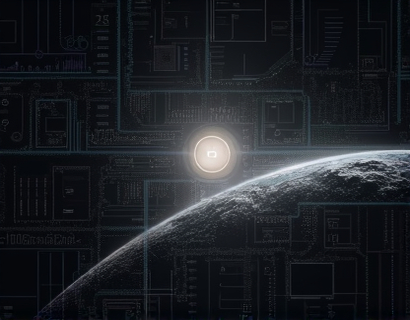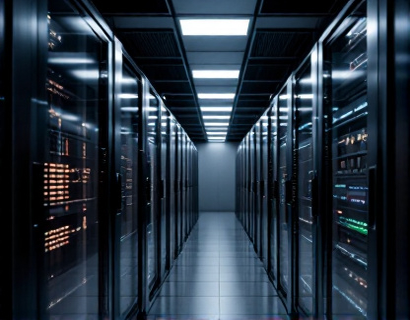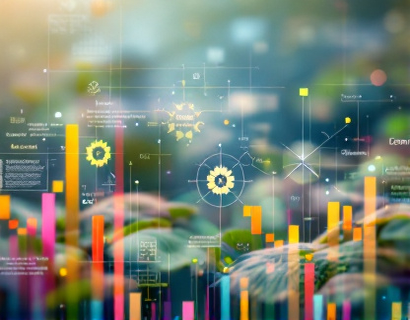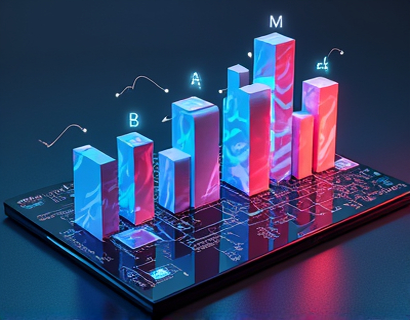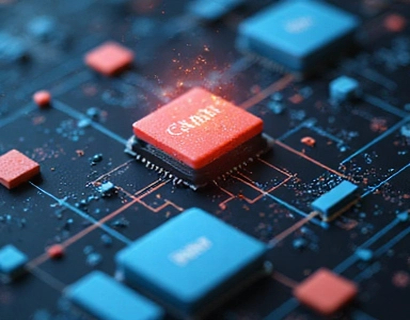Decentralized Productivity 5.0: Harnessing AI and Crypto for Next-Gen App Ecosystems
The evolution of digital productivity tools has reached a pivotal point with the convergence of Artificial Intelligence (AI) and cryptocurrency technologies. This convergence, often referred to as Decentralized Productivity 5.0, promises to revolutionize how we interact with digital applications and workflows. By merging the power of AI with the security and transparency of blockchain, this new paradigm offers unprecedented opportunities for enhancing user experience and redefining productivity landscapes.
The traditional centralized model of app ecosystems has been characterized by bottlenecks, single points of failure, and limited scalability. In contrast, decentralized solutions leverage distributed networks to create more resilient, efficient, and user-centric systems. This article delves into the transformative potential of integrating AI and cryptocurrency to unlock seamless and efficient digital solutions, providing a comprehensive look at the future of app ecosystems.
Understanding Decentralized Productivity 5.0
Decentralized Productivity 5.0 represents the next evolution in digital productivity, building on the principles of decentralization, automation, and intelligence. This model leverages blockchain technology to create a trustless environment where applications and services operate without a central authority. The integration of AI further enhances this ecosystem by enabling intelligent automation, predictive analytics, and personalized user experiences.
The core idea behind Decentralized Productivity 5.0 is to distribute control and data across a network of nodes, ensuring that no single entity has dominance. This decentralized approach not only improves security and privacy but also fosters innovation by allowing developers to build on a shared, open infrastructure. The result is a more dynamic and adaptable app ecosystem that can evolve in real-time to meet user needs.
AI in Decentralized App Ecosystems
AI plays a crucial role in Decentralized Productivity 5.0 by providing the intelligence needed to manage and optimize decentralized systems. Machine learning algorithms can analyze vast amounts of data to identify patterns, predict user behavior, and automate complex tasks. In a decentralized context, AI can facilitate smart contract execution, enhance security protocols, and improve user interface designs.
One of the key applications of AI in decentralized app ecosystems is in the realm of smart contracts. AI can be used to write more sophisticated and self-executing contracts that adapt to changing conditions and user inputs. This not only reduces the risk of errors but also increases the efficiency of transactions. For instance, AI-driven smart contracts can automatically adjust terms based on real-time data, ensuring that all parties involved benefit from the most up-to-date information.
Moreover, AI-powered chatbots and virtual assistants can enhance user interactions within decentralized applications. These AI-driven interfaces can provide personalized support, answer queries, and guide users through complex workflows. By understanding user preferences and behavior, AI can tailor experiences to individual needs, making decentralized apps more intuitive and user-friendly.
Cryptocurrency and Decentralized Finance (DeFi)
Cryptocurrency is a fundamental component of Decentralized Productivity 5.0, serving as the medium of exchange and value storage within decentralized ecosystems. Blockchain-based currencies offer a secure, transparent, and borderless way to conduct transactions, eliminating the need for intermediaries such as banks. This not only reduces transaction costs but also increases the speed and reliability of financial operations.
Decentralized Finance (DeFi) is an extension of blockchain technology that applies financial concepts to decentralized networks. DeFi platforms enable users to lend, borrow, trade, and invest in a wide range of assets without traditional financial institutions. This democratizes access to financial services and opens up new opportunities for decentralized app developers to create innovative financial products and services.
In the context of productivity tools, DeFi can provide seamless payment solutions for subscription-based services, microtransactions, and content monetization. For example, developers can create decentralized marketplaces where users can purchase and sell digital goods and services using cryptocurrency, ensuring transparent and tamper-proof transactions.
Enhancing User Experience through Decentralization
One of the most significant advantages of Decentralized Productivity 5.0 is the enhanced user experience it offers. By removing central authorities, decentralized systems reduce the friction and delays often associated with traditional app ecosystems. Users can interact directly with applications and services, enjoying faster load times and more reliable performance.
Decentralized identity management is another area where user experience is significantly improved. Traditional systems rely on centralized identity providers, which can be vulnerable to breaches and data misuse. Decentralized identity solutions, powered by blockchain, allow users to control their own identities, granting access to applications and services on their terms. This not only enhances security but also gives users greater autonomy over their personal data.
Furthermore, decentralized governance models enable communities to have a say in the development and direction of apps and services. Through token-based voting systems, users can participate in decision-making processes, ensuring that the ecosystem evolves in line with user needs and preferences. This democratic approach fosters a sense of ownership and engagement, leading to more robust and user-centric applications.
Case Studies and Real-World Applications
Several projects and platforms are already demonstrating the potential of Decentralized Productivity 5.0. One notable example is Filecoin, a decentralized storage network that uses blockchain to incentivize users to share their storage capacity. By integrating AI to optimize data placement and retrieval, Filecoin offers a scalable and secure alternative to centralized cloud storage services.
Another example is MakerDAO, a decentralized finance platform that allows users to create and manage stablecoins called DAI. AI algorithms manage the stability of DAI by adjusting collateral requirements and interest rates based on market conditions. This ensures that users can access stable and reliable digital currency for various productivity tasks.
In the realm of content creation and distribution, platforms like Audius leverage blockchain and AI to create a decentralized music streaming service. Audius eliminates intermediaries, allowing artists to upload, distribute, and monetize their music directly to listeners. AI-driven recommendation algorithms help users discover new content, enhancing the overall user experience.
Challenges and Considerations
While the potential of Decentralized Productivity 5.0 is immense, there are several challenges and considerations that need to be addressed. One of the primary concerns is scalability. Current blockchain technologies often struggle with high transaction volumes and slow processing times, which can impact the performance of decentralized applications. However, ongoing developments in blockchain scalability solutions, such as layer 2 protocols and sharding, are addressing these issues.
Another challenge is the user adoption curve. Decentralized technologies can be complex and intimidating for new users, requiring education and intuitive interfaces to facilitate widespread adoption. Developers must focus on creating user-friendly experiences that lower the barrier to entry for non-technical users.
Regulatory uncertainty is also a significant factor. As decentralized technologies operate outside traditional legal frameworks, there is a need for clear guidelines and regulations to ensure compliance and protect users. Collaboration between developers, policymakers, and industry stakeholders is essential to navigate this landscape effectively.
Future Outlook
The future of Decentralized Productivity 5.0 looks promising, with ongoing advancements in AI and blockchain technology paving the way for more sophisticated and integrated app ecosystems. As more developers and organizations embrace decentralized principles, we can expect to see a proliferation of innovative solutions that enhance productivity, security, and user experience.
The convergence of AI and cryptocurrency will continue to drive the evolution of decentralized applications, leading to more intelligent, autonomous, and user-centric systems. The potential for decentralized productivity tools to transform industries and empower individuals is vast, making Decentralized Productivity 5.0 a critical area of focus for tech-savvy innovators and early adopters.
In conclusion, Decentralized Productivity 5.0 represents a paradigm shift in how we approach digital productivity. By harnessing the power of AI and cryptocurrency, we can create more resilient, efficient, and user-friendly app ecosystems. As this field continues to mature, the opportunities for innovation and growth are boundless, offering exciting prospects for the future of digital work and collaboration.



